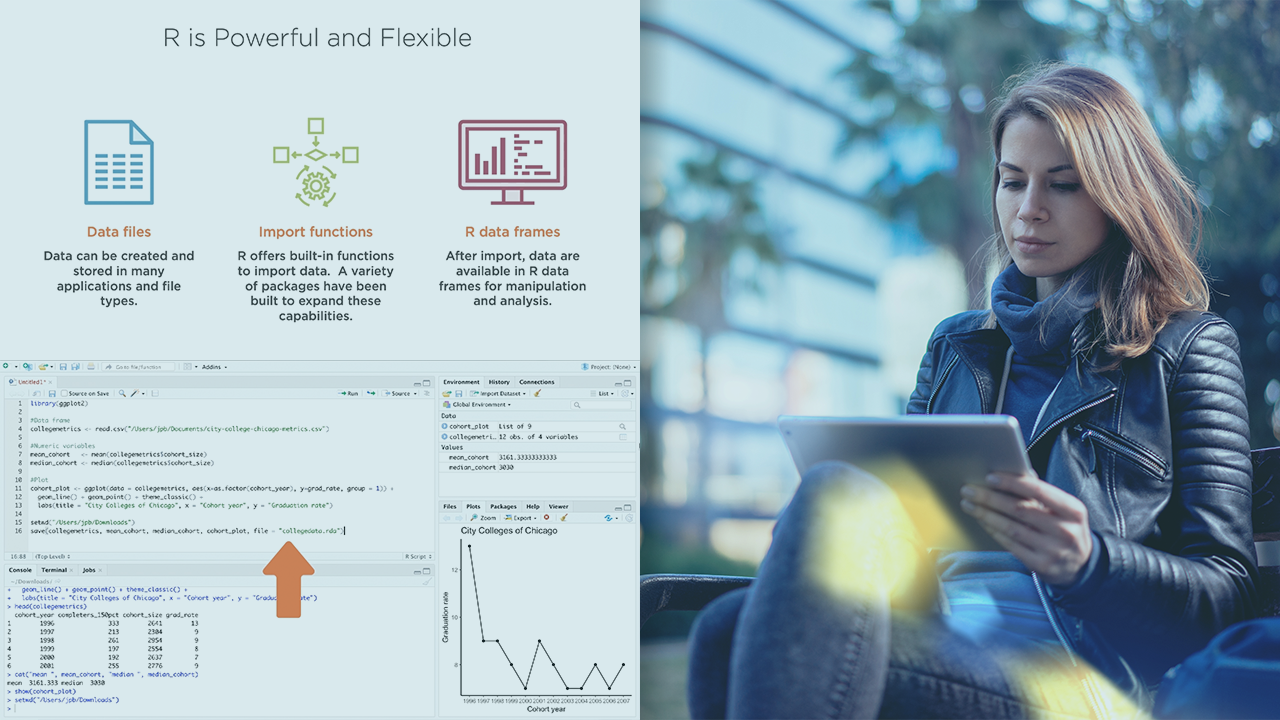- Course
Importing Common Data File Formats: R 4 Playbook
Whether the common CSV or Excel file, or files from specialized statistical applications, R allows you to import data from a variety of sources. This course will show you how to import data from a variety of formats into R for further analysis.

- Course
Importing Common Data File Formats: R 4 Playbook
Whether the common CSV or Excel file, or files from specialized statistical applications, R allows you to import data from a variety of sources. This course will show you how to import data from a variety of formats into R for further analysis.
Get started today
Access this course and other top-rated tech content with one of our business plans.
Try this course for free
Access this course and other top-rated tech content with one of our individual plans.
This course is included in the libraries shown below:
- Data
What you'll learn
To effectively analyze and manipulate data, it is important to have the ability to access data stored in various formats. In this course, Importing Common Data File Formats: R 4 Playbook, you will gain the ability to import data from various sources into R. First, you will learn how to import data from CSV and delimited text files. Next, you will discover how to import and format data from Microsoft Excel. Then, you will explore how to import data from specialized statistical applications, including SAS, Stata, and Minitab. Finally, you'll learn about the ability to create, save, and reuse objects in R itself. When you are finished with this course, you will have the knowledge of base R functions and various packages to easily work with data from a variety of sources.

